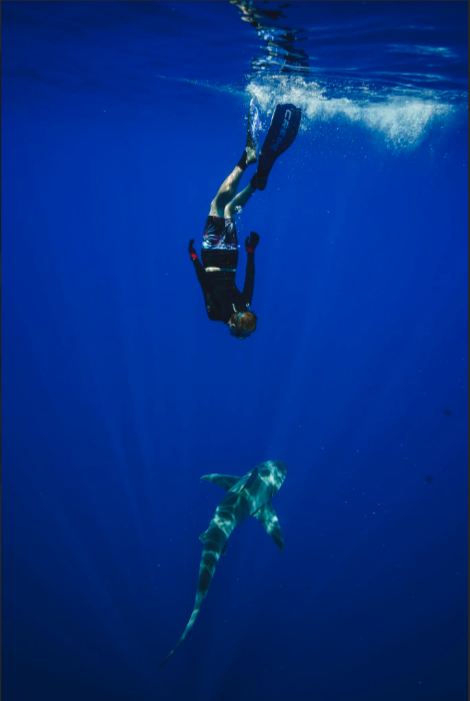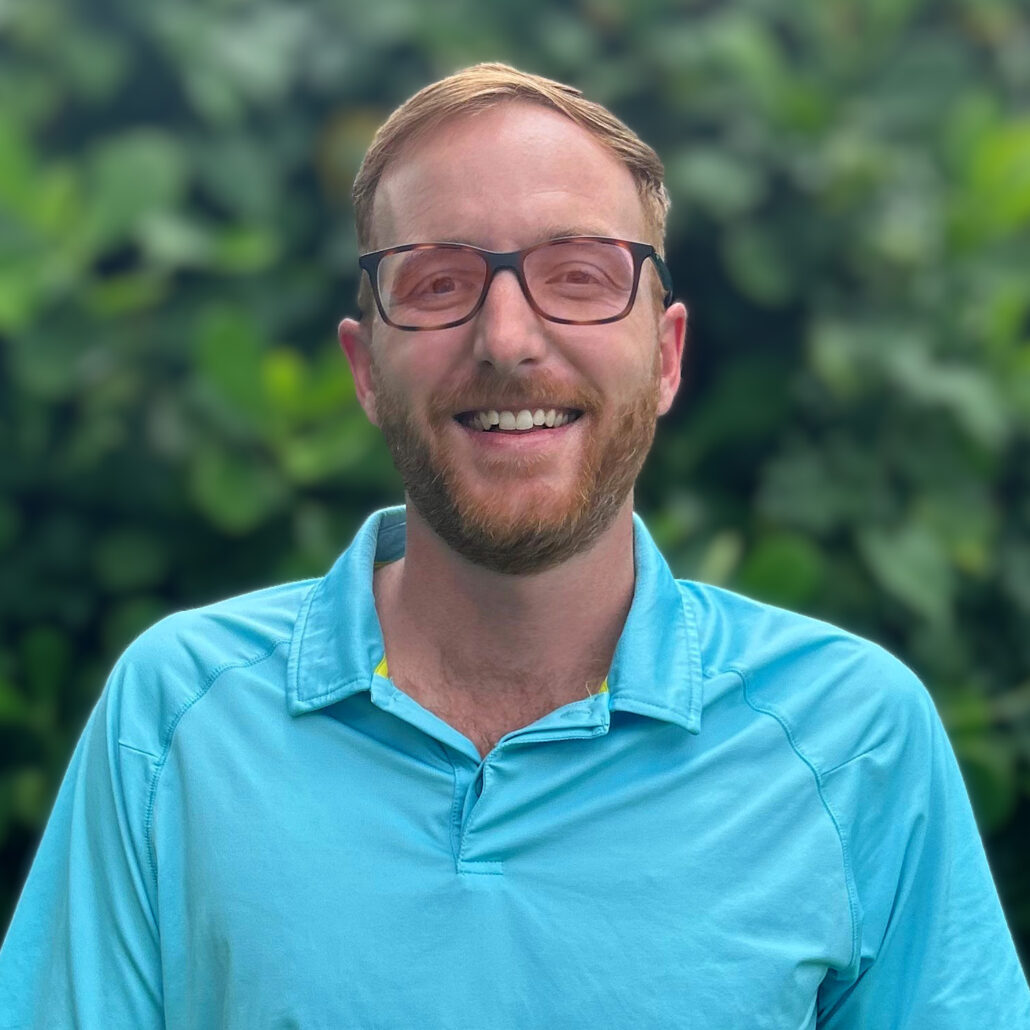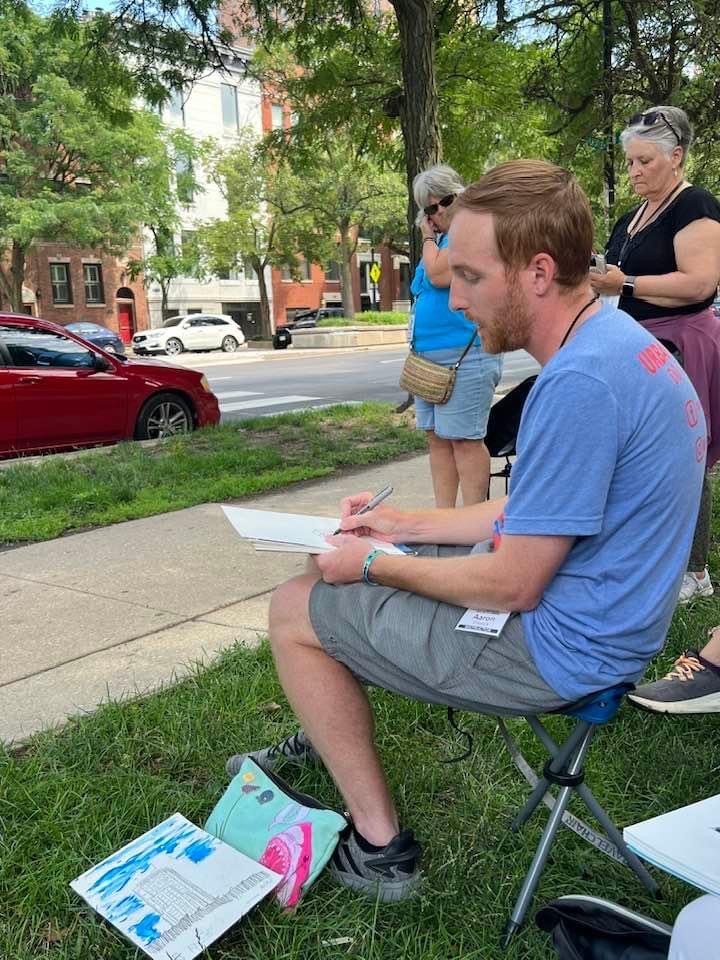Rooted Passions digs into the origin stories of Hitchcock Design Group’s fascination with landscape architecture, horticulture, urban planning, and design.
Joemy Buschur, Associate | Austin Office
Hailing from Alaska, Joemy’s path to landscape architecture is one rooted in creativity, versatility, and a deep desire to craft meaningful spaces in the built environment. With a background that spans fine art and textiles, her journey began at Savannah College of Art and Design (SCAD), where she earned a Bachelor of Fine Arts in Fibers. Initially focused on three-dimensional work, Joemy’s interest in how textiles shape interior spaces led her to consider larger, more complex scales of design.
After working as an artist and designer for several years, Joemy realized she wanted to explore how textiles influence architectural spaces. This led her to pursue graduate studies at the prestigious Rhode Island School of Design (RISD), where she earned her master’s degree from the Interior Architecture Adaptive Reuse program. Adaptive Reuse focuses on transforming existing structures into new spaces. It was during her time at RISD that Joemy expanded her focus from the built environment to include the broader ecological systems surrounding it.
“I started to widen my lens,” Joemy reflects,“ and consider not only architecture but also how landscapes interact with buildings and the site as a whole.” This multi-disciplinary approach was fueled by her desire to understand how ecological systems—like stormwater management and biodiversity—play a critical role in urban design. Her graduate thesis embraced these broader concerns, moving beyond architecture to include the landscape and environmental systems surrounding buildings.
After completing her graduate studies, Joemy worked in architecture and interior architecture for a few years, working on projects with a holistic approach to architecture and landscape design. This hands-on experience deepened her understanding of the benefits of close collaboration between design disciplines. In 2018, she fully transitioned into landscape architecture, bringing her background in textiles, architecture, and adaptive reuse with her.
For Joemy, landscape architecture is not just about designing spaces—it’s about being the “glue” that connects various disciplines. “We tie it all together,” she explains. “Landscape architects bridge the gap between architecture, engineering, ecological systems, and the needs of end users and their communities. Whether addressing biodiversity, climate change, or urban aesthetics, landscape architects can enhance human experiences and local ecology.”
Joemy’s unique background gives her a distinct perspective on landscape architecture. Her journey exemplifies how diverse skills and experiences can contribute to a broader understanding of design, making her a well-rounded professional. To students and young professionals interested in pursuing landscape architecture, her advice is simple: “Be open to exploring the profession with a wide lens. There are so many niche avenues within the field, and your non-traditional background can be a big strength.”
Her journey shows that landscape architecture is not just about plants and parks—it’s about creating spaces that are functional, sustainable, and truly meaningful for people and the environment.
Favorite Project: Velocity Crossing, Austin, Texas
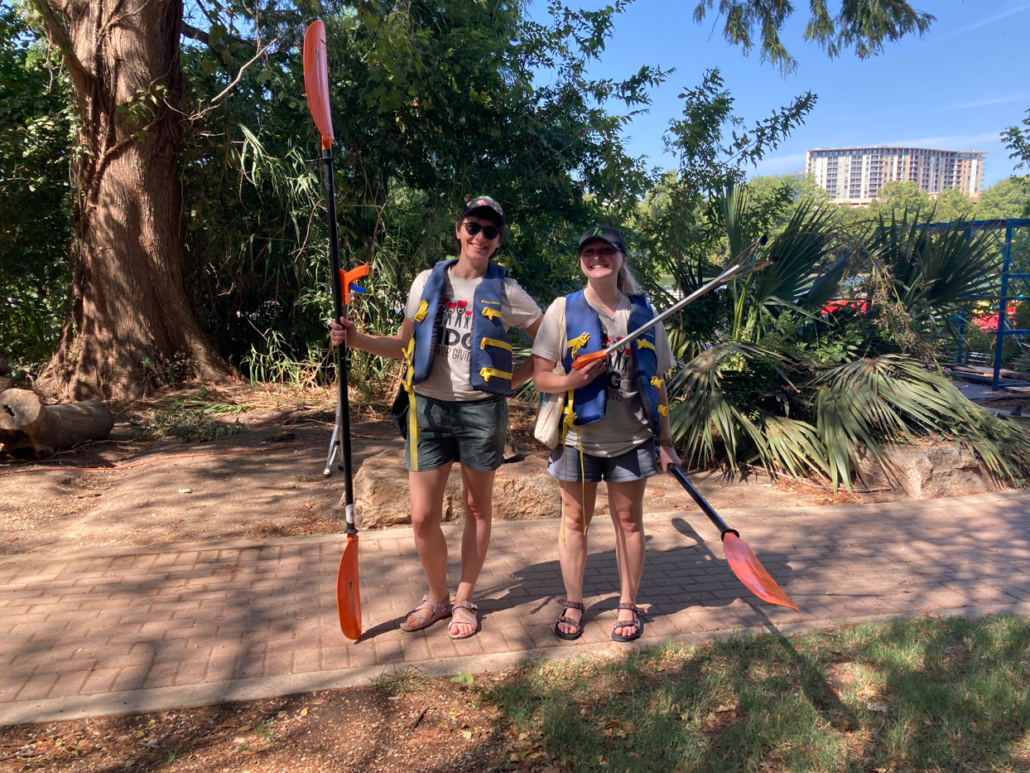
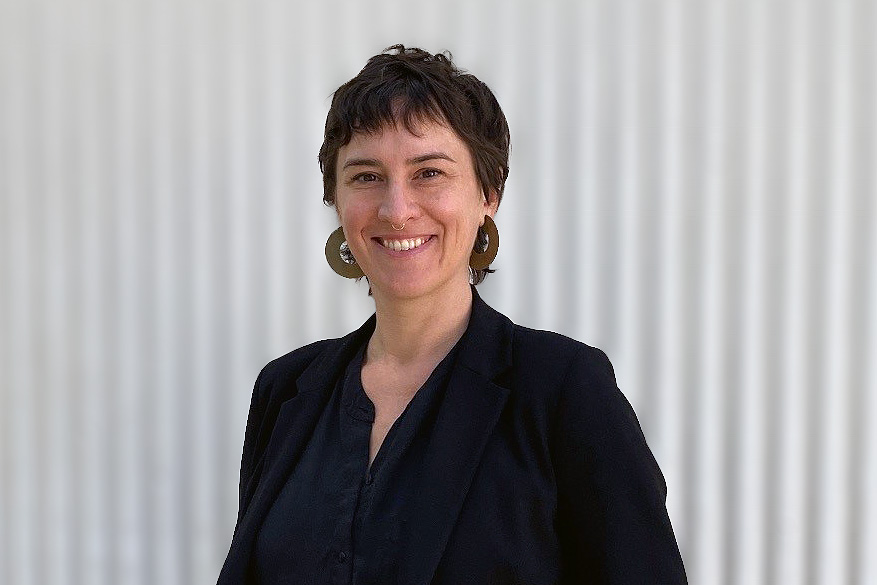
Aaron Elswick, Senior Associate | South Florida Office
Aaron’s journey into the field of landscape architecture didn’t follow a straightforward path. His story, shaped by a mixture of academic exploration, life experiences, and artistic inspiration, is one of perseverance and finding purpose in creativity.
In high school, Aaron excelled in both math and art, two subjects that usually define divergent career paths. He was often encouraged to pursue architecture, but when it came time to choose a university, the decision was based on practicality—he accepted a scholarship to the University of Kentucky (UK), a school he had always been a fan of. Surprisingly, Aaron began his academic journey in pre-med, driven by strong academic performance but uncertain of his career aspirations. However, after enduring a particularly challenging set of electives, it became clear that medicine wasn’t for him.
Still searching for the right fit, Aaron took a test required for entry into Kentucky’s design program. This assessment, aimed at evaluating a student’s creative thinking, came easily to him, and the results drew the attention of several design disciplines. It was landscape architecture that stood out, thanks in part to a visit to the Louisville waterfront, which introduced him to the expansive possibilities of the field.
A pivotal moment in Aaron’s career exploration came during a visit to Chicago. Standing in Millennium Park, he had an epiphany—everything he was seeing was someone’s design, a form of art. In that moment, he realized that landscape architecture could allow him to leave a lasting impact on the world. He was particularly struck by the potential to affect more people than traditional art in museums. Aaron decided then that this was what he wanted to do.
His education in landscape architecture included a blend of hands-on work and internships, where he transitioned from digging holes and leading crews in design-build firms to becoming a designer and site supervisor. As his skills grew, so did his exposure to real-world projects. One of his most influential internships came when he met Chris Lannert of The Lannert Group, who was working on redeveloping a landfill into a massive mixed-use area. That experience cemented Aaron’s desire to work on large-scale projects with significant impact.
Continuing his education, Aaron enrolled at the Savannah College of Art and Design (SCAD) for graduate school. While in Chicago, he interned with Terry Guen, the mastermind behind Chicago’s Millennium Park. This experience, paired with Terry’s ecological and sustainability-focused approach, inspired Aaron to focus his thesis on how urban design could save the ocean. He spent a year bridging the gap between marine biology and urban design, making critical connections that solidified his passion for landscape architecture.
Aaron’s journey was not without challenges. He dealt with ADD and dyslexia, which made academics difficult, but his father’s encouragement to keep pursuing his passion for drawing was instrumental. When asked what advice he would give to aspiring landscape architects, Aaron emphasizes that the profession requires passion, curiosity, and a willingness to keep learning. He encourages young professionals to deeply study nature, understand its principles, and apply them creatively to urban environments, making a significant environmental impact in the process.
Ultimately, Aaron’s unconventional path into landscape architecture has shaped him into a unique thinker and practitioner. What started as a passion for art and design transformed into a desire to influence spaces and communities on a grand scale, creating lasting legacies through the outdoor environment. His journey serves as inspiration for others to embrace their quirks and differences, as those traits can become the very foundation of a successful and fulfilling career.
Favorite Project: Presidium at Waterford, Austin, Texas
